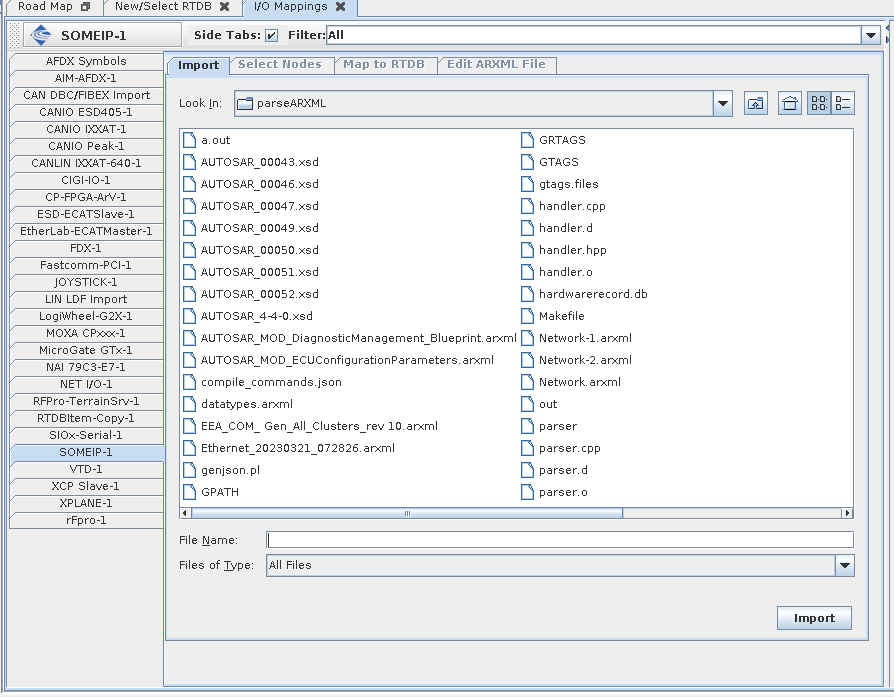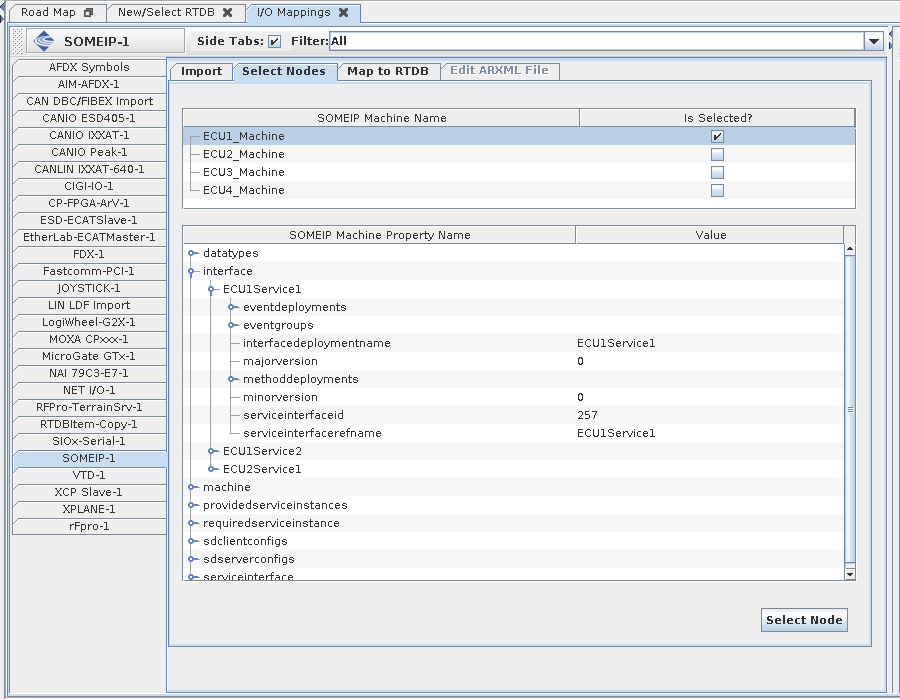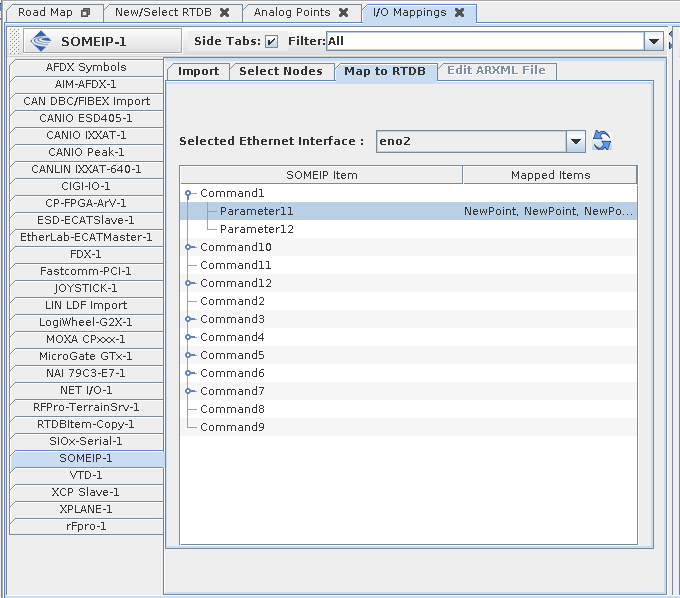SOME/IP
SOME/IP (Scalable service-Oriented Middleware over IP)
Automotive Ethernet is a set of open, scalable network standards based on traditional Ethernet but specifically adapted for the unique and demanding environment within vehicles. It serves as a high-speed communication backbone for various in-car systems and is crucial for enabling advanced automotive technologies.
SOME/IP is a middleware protocol specifically designed for service-oriented communication over IP networks in automotive environments, particularly when using Automotive Ethernet. It provides a standardized way for different electronic control units (ECUs) within a vehicle to communicate with each other based on services.
SimWB SOME/IP support allows users to import ARXML file with SOME/IP network definition and simulate any given node in the network. You can drive the different events, methods, and parameters in the node via any model that is running under SimWB via RTDB.
Reference Information
I/O Card Model Number
N/A
I/O Driver Model Number
N.A
I/O Module License:
ICS-SWB-1256
Requirements:
RedHawk Ubuntu System (>8.4)
SOME/IP in the context of Automotive Ethernet:
- Service-Oriented Architecture (SOA): Unlike traditional signal-based communication (like CAN), SOME/IP enables an SOA where ECUs offer "services" (functions or data) that other ECUs ("clients") can consume. This makes the architecture more flexible, scalable, and easier to manage, especially with the increasing complexity of modern vehicles.
- Runs Over IP: As its name suggests, SOME/IP operates over the Internet Protocol (IP), which is the foundation of Ethernet networks. This allows it to leverage the high bandwidth capabilities of Automotive Ethernet. It can use either TCP (Transmission Control Protocol) or UDP (User Datagram Protocol) as its transport layer, with UDP often preferred for real-time applications due to its lower overhead and lack of retransmission mechanisms that could introduce latency.
- Key Features:
- Remote Procedure Call (RPC): Enables a client to invoke functions or methods on a remote server ECU as if they were local.
- Event Notifications: Allows servers to notify clients about specific events or changes in data. Clients can subscribe to these notifications dynamically.
- Serialization/Deserialization: Defines how data is converted into a format suitable for network transmission and back into a usable format upon reception. It supports efficient handling of complex data structures.
- Service Discovery (SD): A crucial component that allows clients to find available service instances on the network. Servers advertise their services, and clients can dynamically discover and connect to them. This dynamic nature is a key advantage over static configurations.
- Benefits in Automotive Ethernet:
- High Bandwidth Utilization: Takes advantage of the high data rates offered by Automotive Ethernet to transmit complex data efficiently.
- Flexibility and Scalability: Makes it easier to add new functionalities and ECUs to the vehicle network without major disruptions, thanks to the service-oriented approach and dynamic service discovery.
- Standardization: Provides a standardized communication layer, promoting interoperability between different ECUs and suppliers.
- Support for Complex Data: Designed to handle the transmission of complex data structures required by advanced applications like ADAS, infotainment, and telematics.
- Real-time Capabilities: When used with UDP and time-sensitive networking (TSN) extensions of Ethernet, SOME/IP can support the real-time communication requirements of critical automotive systems.
- Relationship with AUTOSAR: SOME/IP is a fundamental part of the AUTOSAR (AUTomotive Open System ARchitecture) standard, providing a standardized middleware for communication between software components running on different ECUs.
In summary, SOME/IP is a vital protocol for modern automotive networking, especially in conjunction with Automotive Ethernet. It provides a flexible, efficient, and standardized way for ECUs to communicate based on services, enabling the development and integration of advanced features and functionalities in today's and future vehicles.
Work flow
The typical work flow is as explained below:
- Import the ARXML file that defines the SOME/IP network.
- SimWB parses the ARXML file and displays the nodes in network. Select the node you would like to simulate under SimWB.
- When you select the node, it allows you to map RTDB variables to available methods, parameters, and events.
- After mapping RTDB variables, when the test session runs, mapped values are transmitted to other nodes in network.
- You may have to configure the network outside SimWB using command such as sudo ip route add 224.0.0.0/4 dev interfacename
Import Tab
|
|
Under this tab, you can browse for files of type .arxml. to import.
Select a file to import and click on the Import button. This should parse the ARXML file and display a list of nodes in the network
that can be emulated under SimWB.
|

|
Select Nodes Tab
|
|
Under this tab, you can select the nodes from the list of available nodes in the network.
Select a node that you want and press 'Select' button.
|

|
|
|
After the selection, SimWB will show you the details of node as shown in the figure here. After this, you can navigate to "Map to RTDB" tab.
|

|
Map to RTDB Tab
|
|
Under this tab, you can map individual parameters to RTDB. You can also specify the interface that you want to use for SOME/IP IO task. Make sure to use
the right interface. THis will change the IP configuration of the selected interface to match the SOME/IP node.
|

|





